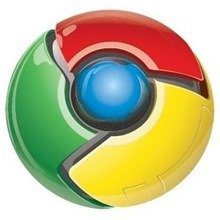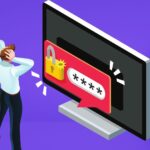All of the efficiency enhancements that iOS 12 brings should also translate to better battery life ideally. However, there’s still a whole lot more that you can do by yourself to get even more juice out of your iPhone and iPad. Here are the tips that will help you do just that.
1. Monitor Battery Usage
iOS 12 features a revamped Battery usage panel on your iPhone and iPad, which now provides detailed graphs that visually depict how the iPhone or iPad consumed battery during either the last 24 hours or the past 2 days (or 10 days on the iPad). Tap Battery on the Settings app to access it. Simply tap on any area within the graph, and you should see which apps were used during that period, along with consumption levels per app. Further down, you can monitor all apps in terms of their battery usage and activity since the last charge. Apps that run in the background are also listed accordingly. Consider checking the Battery usage panel regularly so that you can tone down on the apps that are using up the most amount of battery life. Also, make use of iOS 12’s Screen Time functionality to impose limits on how much access you have to certain power-hungry apps.
2. Disable Background Refresh
By default, certain apps are configured to run in the background so that they are up to date as soon as you load them up. However, apps that use background refreshing can consume battery life rather aggressively — photo management and backup tools such as Google Photos fall into this category. If you don’t want an app to function while it isn’t actively in use, you can always disable background refreshing for the said app. On the Settings app, tap on an app, and then turn off the switch next to Background App Refresh. Apps that don’t run in the background won’t feature this toggle.
3. Disable Location Services
Certain apps like to use your location to deliver a better experience when online. However, this function takes a significant toll on battery life due to the additional workload. Hence, consider turning off location services for apps that you could do without. To manage location services, tap Privacy in the Settings app, and then tap Location. From this screen, you can disable location services for all apps on your device, or manage them individually per app. When managing apps individually, you can further specify whether an app can use location services using the Never, While Using, or Always options. If location services are important for the app in question (such as Google Maps or Apple Maps), you may want to select the While Using option rather than disabling location services completely.
4. Lower Brightness Levels
You may have heard this several times, but once again, too much screen brightness drains the battery on your iPhone or iPad pretty fast. If you feel that you can do with a tad less brightness on your iOS device, go ahead and lower it down. Swipe down from the upper right corner of the screen to bring up the Control Center, and then use the nifty brightness controller to do that easily. Even with Auto-Brightness turned on, iOS 12 only adjusts brightness automatically with the manually adjusted level.
5. Turn on Wi-Fi Assist
If you reside in an area with wild fluctuations in signal strength, that alone can cause severe drops in battery life. That’s because the cellular radio on your iOS device works overtime to establish connectivity. To prevent that from happening, iOS 12 features the Wi-Fi Assist option, which as the name suggests, connects automatically to known Wi-Fi hotspots in instances where cellular connectivity drops randomly. To turn on Wi-Fi Assist, tap Cellular Data in the Settings panel, scroll all the way down and then turn on the toggle next to Wi-Fi Assist.
6. Turn on Airplane Mode
Once again, in areas with weak signals, the cellular radio on your iOS device saps away at the battery just to keep you connected to the nearest cellular tower. If connectivity is poor, consider switching temporarily to Airplane Mode until you reach an area with better signal strength. While this isn’t a feasible option for most, consider it a means to conserve battery life if your iOS device is really low on juice.
7. Reduce Auto-Lock Time Duration
Is the screen on your iPhone or iPad taking a long time to turn off by itself? That’s a waste of battery life, right? To lower the time duration, tap Display & Brightness on the Settings app, and then tap Auto-Lock. On the subsequent screen, select a much lower time frame than the one that’s already in use. The 30 Seconds or 1 Minute options should do you a world of good.
8. Deliver Quiet Notifications
Notifications are important and pretty cool to deal with, thanks to the re-introduction of stacking in iOS 12. However, they also light up the screen whenever you receive them. If you get a lot of notifications regularly, and you are bound to lose a ton of juice in next to no time. However, rather than turning off notifications completely, consider delivering them quietly to the Notification Center instead — that stops the screen from being lit up automatically with incoming notifications. To do that, swipe to the left on any notification (from either the Notification Center or Lock Screen), tap Manage, and then tap Deliver Quietly — all notifications related to the app should now be sent directly to the Notification Center instead. When using an iPhone, you can also choose to keep it face down to stop notifications from lighting up the screen. Mind the surface else the display might get scratches.
9. Disable Unwanted Widgets
Yes, widgets provide a pretty useful way to stay in the loop as to the latest happenings on your favorite apps, but providing relevant information all the time (especially if the widget has to connect online) it drains battery life. To turn off a widget, tap the Edit option on the left-most corner of the Home screen, and then tap the red-colored Remove option listed next to the widget. You can always add back the removed widgets right from that screen.
10. Decrease Fetch Data Frequency
When adding email accounts that fetch data from online servers to stay updated, your device ends up consuming more battery. However, you can tone down on the frequency of the Fetch schedule used by iOS 12 — to do that, tap the Passwords & Accounts option on the Settings app, and then tap Fetch New Data. Under the section labeled Fetch, select a higher time duration (preferably Hourly). Alternatively, use the Manually option to only fetch data when you actively use the app, or Automatically to have that happen when connected to a source of power.
11. Switch to Dark Mode
Whenever possible, use dark mode on apps that support them — YouTube, Firefox for iOS, etc., all feature dedicated dark modes. On iOS devices that sport OLED displays, such as the iPhone X and XS, darker pixels consume far less power. Diving briefly into the Settings panel of an app should let you figure out if it sports a dark mode or not. And if you use the revamped Books app on iOS 12, dark mode automatically turns on in low-light conditions.
12. Use Native Smart Invert
Admittedly, most apps don’t sport dedicated dark modes, but it’s not like you can’t do something about it. Use iOS 12’s built-in Smart Invert mode instead, and you should be good to go. Although the feature uses a color inversion scheme to generate the ‘dark mode’ effect, it’s smart enough (as its name suggests) to leave images alone, so you’ll have a more than decent experience on most apps. To turn it on, tap General on the Settings app, tap Display Accommodations, tap Invert Colors, and then flick the toggle next to Smart Invert.
13. Disable Hey Siri
Don’t like Siri popping up randomly? Why not turn it off and save your iOS device the trouble of staying on guard to hear your voice all the time? On the Settings app, tap Siri & Search, and then turn off the toggle next to Hey Siri. You can still bring up and use Siri whenever you want by pressing and holding either the Home or the Power buttons.
14. Reduce Motion
iOS 12 brings to the table its fair share of cool visual effects, but they come at a price — battery life. If you don’t mind missing out on the extra eye candy while performing common tasks such as bringing up the Home screen or the app switcher, then consider turning them off. To do that, tap General on the Settings app, tap Accessibility, tap Reduce Motion, and then turn on the switch next to Reduce Motion.
15. Enable Low Power Mode
iPhones have a power usage setting that you can turn on so that your device uses very little power to function — Low Power Mode. You may have already come across it since your device reminds you to turn it on whenever you fall to the last 20% of charge. However, you can also choose to manually turn the thing on whenever you want. To turn it on, tap Battery on the Settings app (yes, the same option that brings up the Battery usage panel), and then turn on the toggle next to Low Power Mode. The battery indicator should turn yellow to indicate that you’ve turned it on. With Low Power Mode turned on, you can expect your device to last a lot longer on a single charge. In fact, it automatically takes care of a lot of the pointers that you have already gone through — background activity, email fetching, and excessive visual effects are all disabled. Now you now know what to do if you are unsure as to when you may get the opportunity to charge your iPhone again.
Make That Charge Count
Charging your iPhone or iPad all the time is never fun, and with the tips mentioned above, it should last for a lot longer than before. Of course, don’t forget to apply any incremental iOS 12 updates as soon as they become available — they are bound to bring more optimizations which translate to more efficiency and better battery life. The above article may contain affiliate links which help support Guiding Tech. However, it does not affect our editorial integrity. The content remains unbiased and authentic.
























